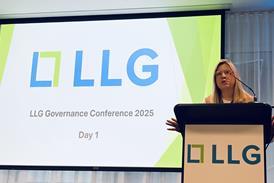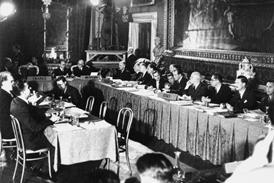Add-back arguments in financial order proceedings tend to arise in two situations: in respect of costs, where one party has incurred significantly higher costs than the other; and where one party has dissipated assets and those assets should be added back to that party’s share.
Costs
The traditional approach was adopted by Balcombe J in Leadbeater v Leadbeater [1985] FLR 789, in which the judge added back to the assets of the parties the monies which they had paid to their respective solicitors in respect of costs. From those sums the judge deducted a figure calculated by assessing the amount of such costs which could not be recoverable from the other side, that is to say the difference between solicitor and client and party/party costs.
The underlying logic of such an approach is that one party should not be penalised if their spouse had spent considerably more than them on their costs. Recent decisions have however discouraged this approach. In R v R [2011] EWHC 3093 (Fam), Coleridge J was not attracted by the Leadbeater approach. The wife’s costs were approximately double those of her husband. The husband understandably argued that the difference should be added back into the asset schedule.
Although Coleridge J was sympathetic to the wife, who had been suspicious of her husband and therefore obliged to carry out much of the work in the proceedings, Coleridge J expressed the following view: ‘As a matter of principle, I am driven to say that I would discourage the pursuit of this add-back principle or approach, which inevitably leads to a quasi-taxation or assessment of costs during the hearing, but without the court having all the material which would be available to, for instance, a costs judge. It also rather flies in the face of the non-order starting point and leads to debates about costs by the back door, which the new rules were designed to try and reduce or prevent.’
Following the approach of Coleridge J, in GS v L (Financial Remedies: Pre-Acquired Assets: Needs) [2011] EWHC 1759 (Fam), King J also rejected the wife’s arguments for an add-back, both in respect of costs and generally. Her preferred approach was to make an issue-based costs order. Following the decision of Chadwick LJ in National Westminster Bank Plc v Kotonou [2007] EWCA Civ 223, in the subsequent costs decision reported as GS v L (No. 2) (Financial Remedies: Costs) [2011] EWHC 2116 (Fam), King J adopted the following approach:Although not a case concerning add-backs, the Court of Appeal’s decision in Ezair v Ezair [2012] EWCA Civ 893 should be noted. At first instance the circuit judge had adjusted the lump sum award to effectively reflect a costs element ‘in order to reflect other matters and, in particular, the husband’s misconduct in relation to those proceedings’. The Court of Appeal found that the judge should not have done so. The orthodox approach was to make an assessment of the lump sum by reference to the section 25 criteria and then to make a separate costs order to reflect conduct within the litigation. The matter was remitted back to the trial judge to quantify the costs order.
- decide whether or not it was appropriate to make an issue-based costs order.
- if it was appropriate, make the order for costs expressing the order by way of a percentage or for the costs to be from a particular date.
Add-backs and wanton dissipation
Arguments are often heard, particularly in difficult economic times, where one party has spent significant sums post-separation and the other party seeks to add back the value of such expenditure. These arguments are known as add-backs or reattribution. In the well-known McCartney divorce ([2008] EWHC 401 (Fam)), £500,000 was added back into Heather Mills’ settlement to reflect her reckless spending post-separation.
The leading authority is now Vaughan v Vaughan [2007] EWCA Civ 1985 (following the earlier decision in Norris v Norris [2003] 1 FLR 1142), in which it was held that it was only fair to add back into a spouse’s assets the amount by which he or she ‘recklessly depletes the assets’ and therefore potentially disadvantages the other spouse. In particular, there must be ‘clear evidence of dissipation’ and there must be ‘a wanton element’. Wilson LJ also stated that ‘reattribution has to be conducted very cautiously’.
In N v F (Financial Orders: Pre-Acquired Wealth) [2011] EWHC 586 (Fam), Mostyn J sought to summarise the principles as follows: ‘In this country we have separate property. If a party disposes of assets with the intention of defeating the other party’s claim then such a transaction can be reversed under section 37 of the Matrimonial Causes Act 1973. Similarly, where there is "clear evidence of dissipation (in which there is a wanton element)" then the dissipated sums can be added back or reattributed. But short of this a party can do what it wants with its money. What is not acceptable is a faint criticism falling short of either of these standards. If a party seeks a set-aside or a reattribution then it must nail its colours to the mast.’
The test established in Vaughan sets a high bar. For example, in BJ v MJ (Financial Remedy Overseas Trust) [2011] EWHC 2708 (Fam), Mostyn J declined to add back gifts made by the husband to an adult child. Referring to his earlier comments in N v F, he also questioned the approach taken to add-backs overall and stated: ‘Although intellectually pure, the problem with this technique is that it does not recreate any actual money. It is in truth a process of penalisation. In my judgement it should be applied very cautiously indeed and only where the dissipation is demonstrably wanton… generally speaking, I suggest that it would be altogether better where a reversal of a transaction is sought, that it is made pursuant to section 37 of the MCA 1973, where the disponee can be heard and where strict statutory criteria must be met.’
Reflecting the approach adopted by Mostyn J in the more recent decision of F v F [2012] EWHC 438 (Fam), Macur J declined to add back payments made by the husband to his adult children as she held it was not ‘wanton and reckless behaviour’. The judge thought that it was entirely reasonable that the husband should have made lifetime bequests to his elder children at times when he was also making provision for the children of the family and wife in the present proceedings.
In the aforementioned decision of GS v L, not only did King J decline to add back the costs, but also the husband’s alleged overspend of £56,000 post-separation. The figure had been calculated by simply deducting the maintenance paid to the wife from the amount allegedly spent by the husband over the same period. King J was of the view that the alleged overspend did not satisfy the Vaughan criteria and again emphasised the courts’ considerable caution in carrying out the add-back exercise.
From a practical perspective, in the vast majority of divorces, add-back arguments may count for little where there are insufficient sums to meet the parties’ needs. Of course a party cannot purchase a property with a notional and fictional sum which has been reattributed to them.
Andrew Newbury, Pannone



























No comments yet